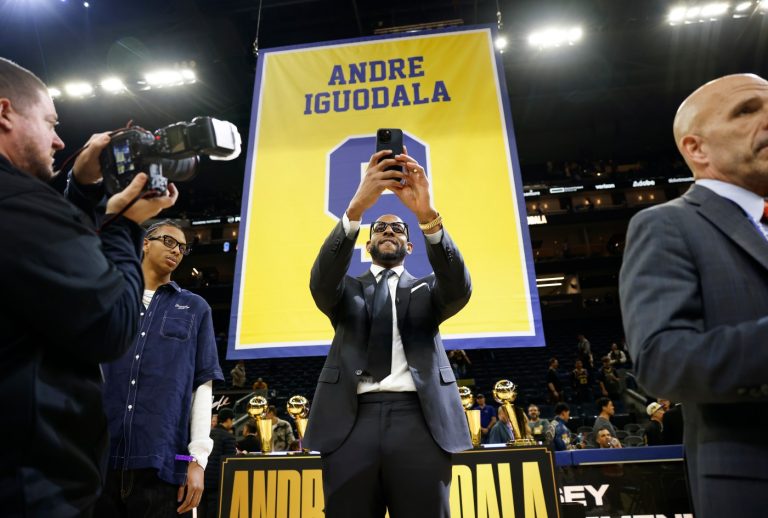Lauren Rosenblatt | The Seattle Times (TNS)
SEATTLE — In December 2020, 15-year-old Tyler Schmidt took a deadly chemical to a wooded area near his home in Camas, Clark County, Washington.
His body was found two days later. The chemical was determined to be his cause of death.
That year, four more individuals died the same way. In 2021 and 2022, 10 more died after ingesting the same chemical.
All 15 individuals purchased the chemical — a substance that can be used as a food preservative or in medical lab settings in a low purity form — from Amazon. It was sold there with 99% purity.
The families of those 15 people have sued Amazon in six separate cases since 2022 — including one filed last month — alleging the company is responsible for the deaths of their loved ones. The families have accused Amazon of mislabeling the product, deleting reviews that warned others how it could be used and leveraging marketing tactics to remind shoppers of the chemical they may have left in their cart.
Some of those individuals, according to the lawsuits, learned of the chemical from a website that promoted suicide and encouraged users to buy the substance specifically from Amazon because they wouldn’t experience any friction to prevent the purchase.
Amazon changed the way it sold the chemical in 2022, making it only accessible to customers who had set up a business account, but the plaintiffs said the company had knowledge of it being used for suicide as early as 2018. In the past 10 years, it sold 11,000 units of the substance, according to court records.
In each lawsuit, the families are asking for a permanent ban on the sale of the chemical on Amazon and for a judge to rule that Amazon is liable for the deaths.
Amazon has argued in court documents that it can’t be held responsible for how its customers use its products, particularly if those customers choose to misuse them. A ruling against the company would have “far-reaching and untenable consequences” for itself and other retailers, attorneys for Amazon wrote.
The question of how much responsibility online platforms like Amazon have when something goes wrong is still unsettled, according to several experts who study product safety and product liability. Though these six cases are focused on one chemical, the outcomes could impact how Amazon monitors the products it sells — and what happens when one is misused.
‘A live issue’ on liability
While there are restrictions around online sales of items like guns and illicit drugs, regulations haven’t kept up with the growth of massive e-commerce stores like Amazon that sell a little bit of everything.
The substance at issue in these lawsuits is generally not available at 99% purity in brick-and-mortar stores. Although it can be used for food preservation or in medical lab settings, its high concentration form does not have a common household use, the plaintiffs argue.
Amazon has said that it constantly monitors its website to identify any products that may be unsafe, following customer feedback and external data. In response to questions about the sale of this chemical, an Amazon spokesperson said it is a “legal and widely available product,” but high concentrations are not “intended for direct consumption.”
“Unfortunately, like many products, it can be misused. To minimize the potential for product misuse, we are limiting the sale” to business buyers, the spokesperson continued.
While these lawsuits focus on a narrow set of circumstances, they highlight an unresolved question of who is liable when a product is intentionally misused. That question gets even trickier when the product comes from a third-party vendor using a platform like Amazon to reach its customers.
Amazon — which says more than 60% of its sales are from independent merchants — has faced several product liability lawsuits but those revolved around defective products.
Still, Oriene Shin, who is part of Consumer Reports’ policy counsel focused on product safety, said the series of lawsuits Amazon now faces are “falling in line with a long list of product liability cases coming up.”
“It’s really a live issue right now on where, or how, Amazon should be acting,” Shin said. “One of the things I’d love to see come out of this litigation is more proactive practices from Amazon — but the question is how would we see those?”
Shin said Amazon isn’t perfect, but she doesn’t count it among the worst online platforms. She said Amazon has been responsive when Consumer Reports flags unsafe products, and compared it to platforms like Facebook Marketplace, that have virtually no restrictions on products or sellers.
Related Articles
63 Albertsons in California to be sold to C&S Wholesale if Kroger merger OK’d
San Jose neo-Nazi sent to prison for threat against journalist
Review: Israel didn’t express concerns about UNRWA staff
What migration is really doing to politics and economies worldwide
US shoppers buy less bread in bad news for farmers
Thomas McBrien, counsel for the Electronic Privacy Information Center, an advocacy group that wrote a brief in support of the plaintiffs in one of the cases Amazon now faces, ranked the company differently. He said Amazon approved sellers and products faster than most of its competitors, meaning it likely has fewer checks in place.
“Part of what makes Amazon so successful is they try to wash their hands,” McBrien said. “The less responsibility they have, the more commerce can flow.”
At the federal level, there is an effort to set a precedent: The Consumer Product Safety Commission is considering an order that would classify Amazon as a distributor of goods, according to reporting from The Wall Street Journal. That means Amazon would be held to the same standards as traditional retailers.
The order comes after the commission sued Amazon in 2021 over allegations that the company distributed unsafe products from third-party sellers, including faulty carbon monoxide detectors and children’s pajamas that failed flammability tests.
In the lawsuits involving this specific chemical, attorneys argued that Amazon’s business model is part of the problem. “Amazon runs on the principle that it can sell anything to anybody anywhere anytime, and for any reason,” the attorneys wrote.
All six lawsuits involve individuals who purchased the chemical before Amazon changed its practices in October 2022. Most families could not be reached in time for publication, but attorneys representing the plaintiffs say the changes are too little, too late, and they worry that the new practice is not permanent.
Without a court order preventing it from doing so, the attorneys argue, the company could reverse course and make it available to any consumer once again.
‘Amazon provides the means’
Back in 2022, before Amazon made changes to how the chemical was sold, the company’s marketing tactics kept bringing customers back to it.
When users searched for the chemical, the fifth result in the search bar read “suicide,” according to screenshots shared in court documents. When users viewed the product page, Amazon recommended other items shoppers had also bought, creating what the plaintiffs called “veritable suicide kits.” When users navigated away from the page without making a purchase, Amazon followed its usual marketing tactics and sent them reminder emails and targeted ads on other websites, according to the lawsuits.
“Clinicians and researchers have found that people are much more likely to attempt suicide if they learn about methods, become convinced it is the right thing to do and have the means,” attorneys for the plaintiffs wrote in court records. “Amazon provides the means.”
On its website, the plaintiffs alleged, Amazon had closely cropped the photo of the chemical bottle. That meant the product page didn’t have warnings about the danger of ingesting it and information about how to reverse its effects.
The website did, however, feature sponsored ads for another chemical that can be used as an antidote if the substance were ingested, according to the lawsuits.
Amazon’s speed of delivery was also a point of concern. In many cases, the individuals received the chemical days after placing an order and died days later.
“When a person is having suicidal thoughts, limiting fast access to methods by which to die can make the difference between life and death, making the fact that (this chemical) can be sold and delivered overnight with Amazon Prime a grave concern,” seven members of Congress wrote in a letter to Amazon CEO Andy Jassy in 2022.
The company sees it differently.
In response to the congressional letter, Amazon’s vice president of public policy, Brian Huseman, said no regulations prevent the sale of the chemical in the U.S., and that Amazon had not received any directives from regulatory bodies to stop the sale.
“At Amazon, we take customer safety seriously,” Huseman wrote. “All products sold in our store must comply with applicable laws and regulations and we have a robust product safety program to protect our customers.”
Two years later, there are still no federal regulations banning the sale of the chemical in its high purity form in the U.S. — though some are under consideration. California passed a law last year restricting the sale of the chemical for those under 18 years old and banning the sale entirely in concentrations greater than 10%. New York passed similar legislation for individuals under 21.
Other countries, including the Netherlands and the United Kingdom, have taken steps to ban the sale, and some online retailers in the U.S., including eBay and Etsy, have stopped selling it altogether.
Many of the families who lost loved ones after they ingested this chemical were hopeful Amazon would do the same once they heard how its product had been used, according to the attorneys representing them in court. Instead, Amazon declined to take action for several months.
Annette Gallego, whose 18-year-old daughter Ava Passannanti took her own life in February 2021, left several reviews on product pages, according to court records. But Amazon never posted those reviews, telling Gallego via email that the content violated company guidelines.
Amazon said in court documents it removed product reviews that included the word “suicide” to discourage users from making a purchase with that in mind. But, because Gallego’s reviews and others like it had been deleted or never posted, the chemical had an artificially high rating on Amazon’s storefront, the lawsuits alleged.
Meredith Mitchel, whose son Ayden Wallin died in August 2020 when he was 16, exchanged 56 messages with Amazon’s customer service department in the months after Ayden’s death. As described in court records, a representative assured her the company would open a product safety investigation. But the chemical remained on sale for another two years.
Ruth Scott, who was the first plaintiff to sue Amazon for the sale of this product after her 27-year-old son Mikael died in December 2020, also reached out to Amazon’s customer service team after finding a receipt on Mikael’s phone.
In her case, the lawsuits allege, a representative once responded: “With all my heart I am sorry for your loss. But at least your son is now on our God’s hand.”
Scott, who described her son as someone who was “too kind for this world,” said she now spends Mikael’s birthday writing a letter recapping the year.
She keeps those letters in a box in Mikael’s room — the same room where he died and where she now feels closest to him, Scott said in a recent interview with The Seattle Times.
“I’m healing, and the damage is already done (but) it hasn’t deterred me. It just makes me more determined,” Scott said. “I don’t want anybody, anybody to feel this pain.”
Years of litigation
When attorney Carrie Goldberg first heard of Scott’s plight, she sent Amazon a letter. Like Scott and the other families, Goldberg reasoned that Amazon didn’t know how the product had been used.
When Amazon’s attorneys told her they would not be taking the product down, Goldberg switched from believing Amazon was ignorant to believing they were part of the problem.
Now Goldberg, fellow lead attorney Naomi Leeds and Seattle-based attorney Kaitlin Cherf, who is helping to represent Tyler Schmidt’s family, say Amazon has been resistant to providing any information over six cases and months of litigation.
“We are over two years into litigating this and we’re still waiting,” Leeds said. “Amazon is just fighting tooth and nail to keep the vault locked up.”
Amazon declined to comment on the allegations that it had been reluctant to share more information in court.
Only one of the six cases has moved into the discovery process, and none is close to a legal conclusion. Amazon has filed motions to dismiss five of the six lawsuits; it has not yet responded in court to the case filed last month.
In two cases, the judge denied Amazon’s request to dismiss the claims against it and ruled the lawsuits should move forward. In another, a judge dropped all of the claims against Amazon. In yet another, a judge dropped some of the claims and allowed others to proceed.
Because there is a high bar for dismissing claims so early on, Thomas Murphy, a defense attorney with Greenbaum, Rowe, Smith & Davis LLP who has studied Amazon product liability cases in the past, said Amazon “has been decently successful so far” in these lawsuits.
In each case, it will be difficult to prove causation, he said. For example, the plaintiff’s attorneys may have to prove that Amazon’s email reminding the shopper what they had left in their cart was the reason they decided to go back and click purchase.
Dorit Reiss, a law professor at the University of California, San Francisco, agreed that these are “hard cases to win,” but said the litigation could have an impact even if there isn’t a definitive ruling.
“If you open the door to Amazon being on the hook for removing warnings about products that people post in the reviews, that goes for other products as well,” she said.
So does the idea that consumers could sue retailers for products that others use to die by suicide, Reiss continued. “If the courts say this specific claim loses, but we are opening the doors, it’s already a big deal.”
Two years after Goldberg started litigating Scott’s case against Amazon — the first in the series of lawsuits — she is about to face the same judge.
King County Superior Court Judge Josephine Wiggs, who handled the start of Scott’s case, is now presiding over the case Goldberg filed in March, representing the parents of three more people who died after ingesting the same chemical.
When Goldberg was first in front of Wiggs in early 2022, she argued that allowing Amazon to continue to sell this chemical would lead to more deaths.
Five months after the case was filed, Donald Spadel Jr. died the same way Mikael Scott had. Spadel, who went by Donny and lived in New Jersey, was 32.
Two months after that, 23-year-old Parker Rose died.
The fate that Goldberg had predicted came true.
____
Warning signs of suicide
If you are experiencing suicidal thoughts or have concerns about someone else who may be, call the the 988 Suicide & Crisis Lifeline at 988 or 1-800-273-TALK (8255). You will be routed to a local crisis center where professionals can talk you through a risk assessment and provide resources in your community. The more of the signs below that a person shows, the greater the risk of suicide.
—Talking about wanting to die
—Looking for a way to kill oneself
—Talking about feeling hopeless or having no purpose
—Talking about feeling trapped or in unbearable pain
—Talking about being a burden to others
—Increasing the use of alcohol or drugs
—Acting anxious, agitated or recklessly
—Sleeping too little or too much
—Withdrawing or feeling isolated
—Showing rage or talking about seeking revenge
—Displaying extreme mood swings
Source: 988 Suicide & Crisis Lifeline
©2024 The Seattle Times. Visit seattletimes.com. Distributed by Tribune Content Agency, LLC.












